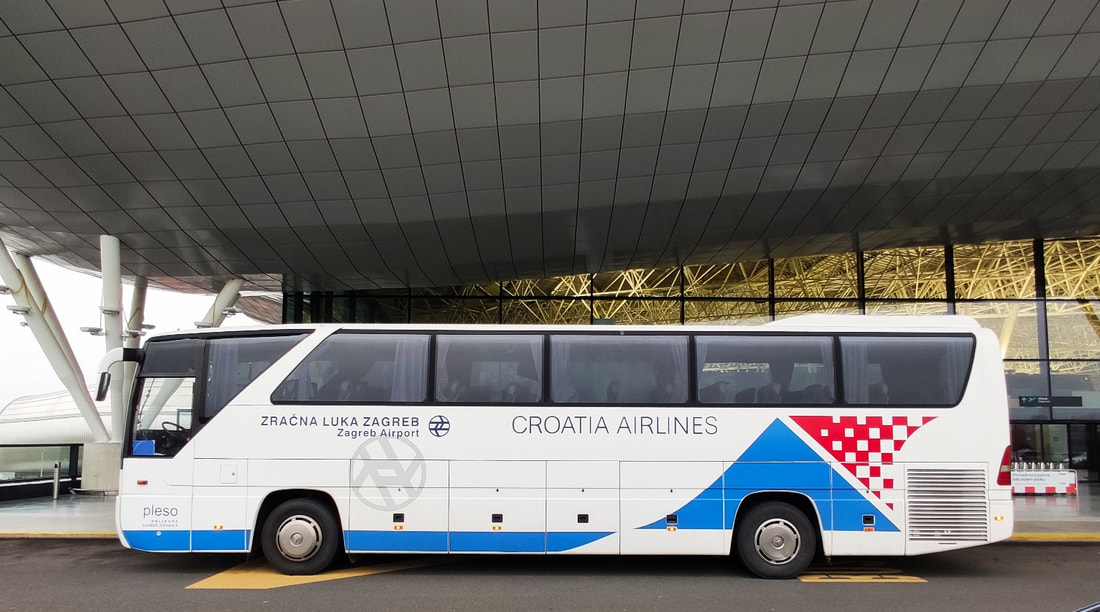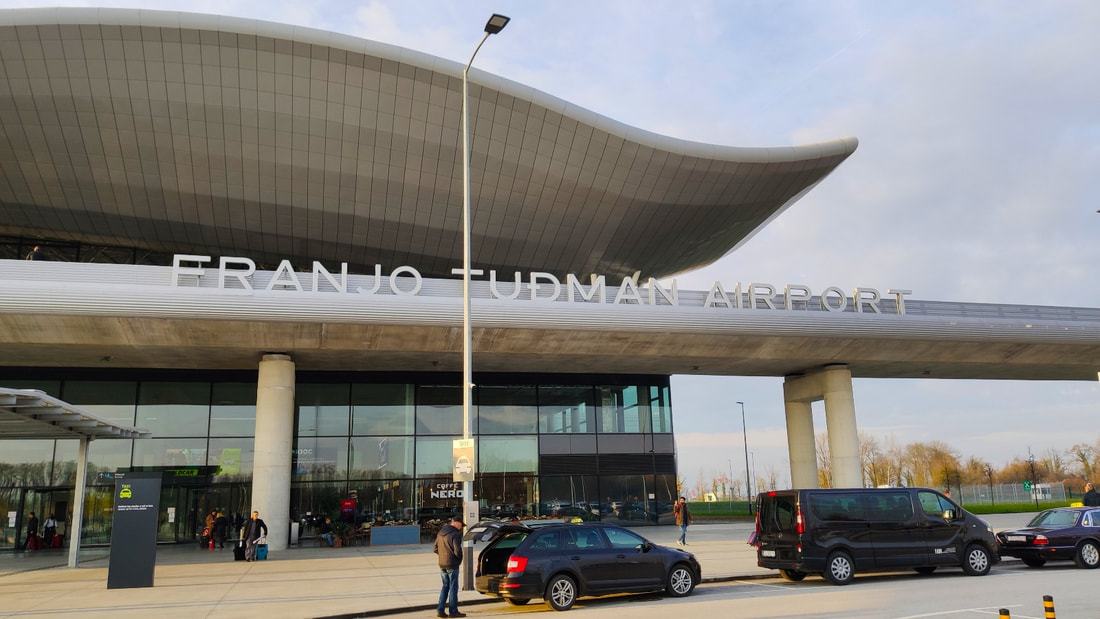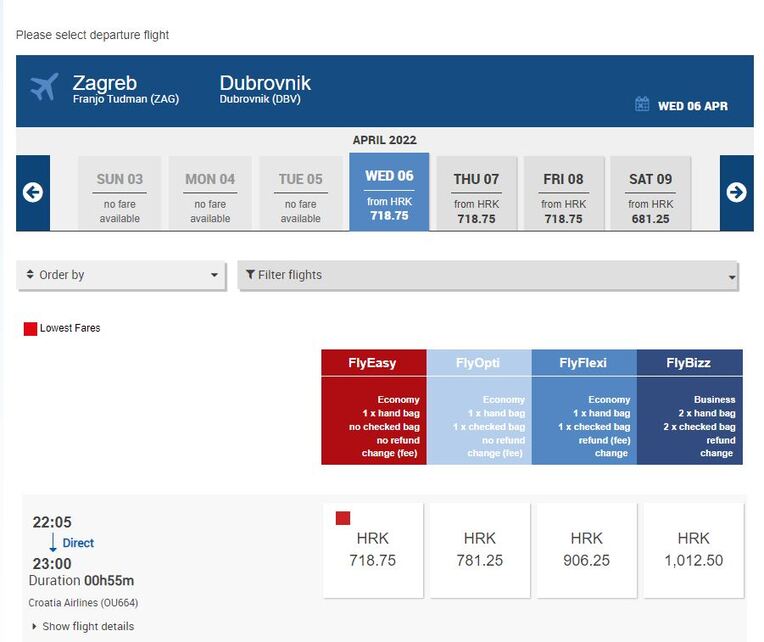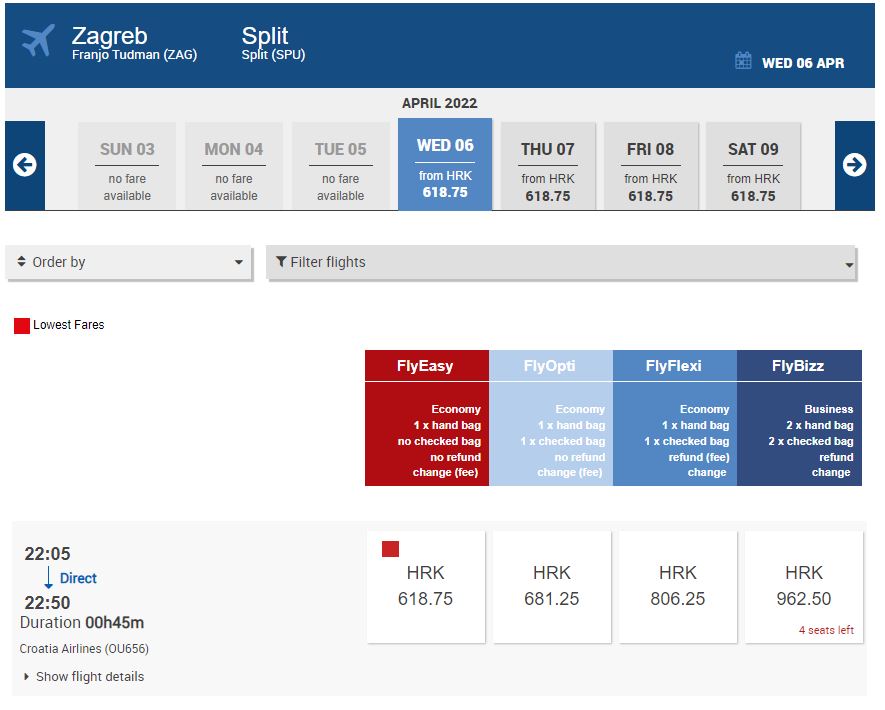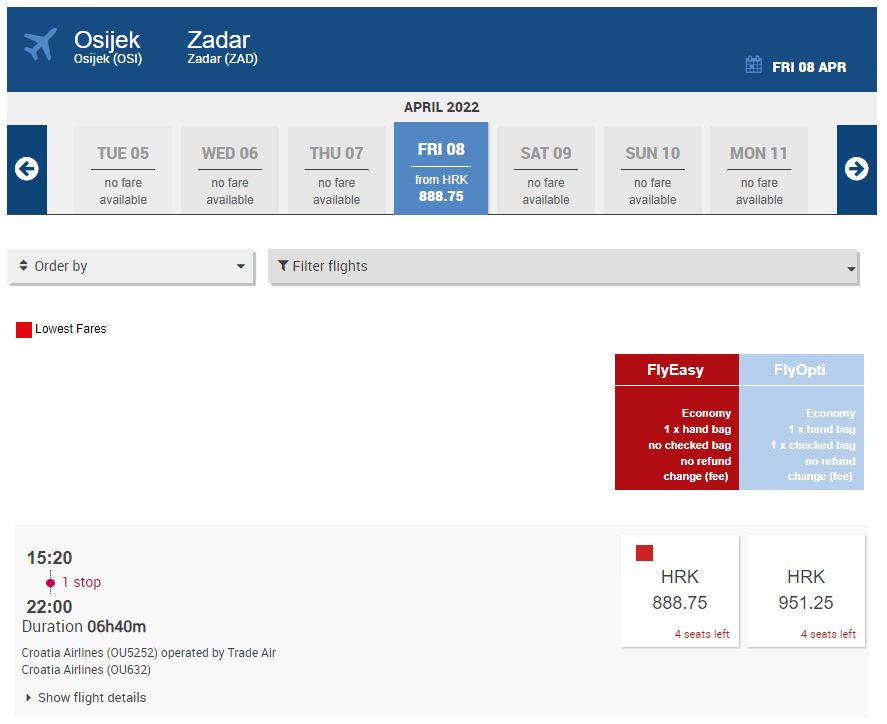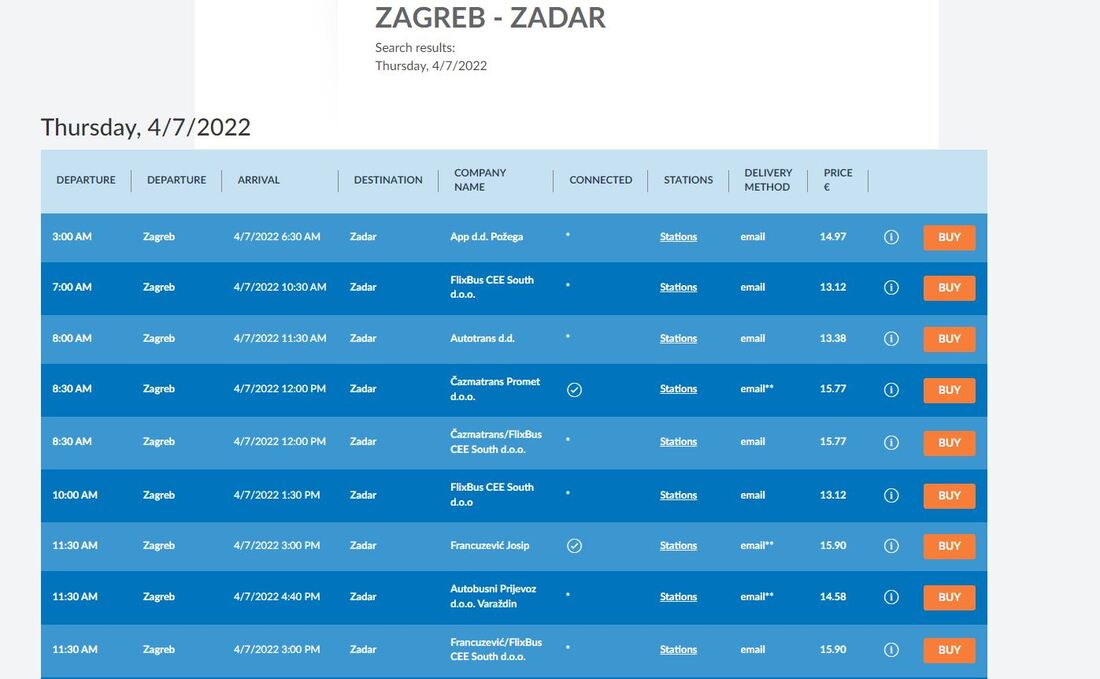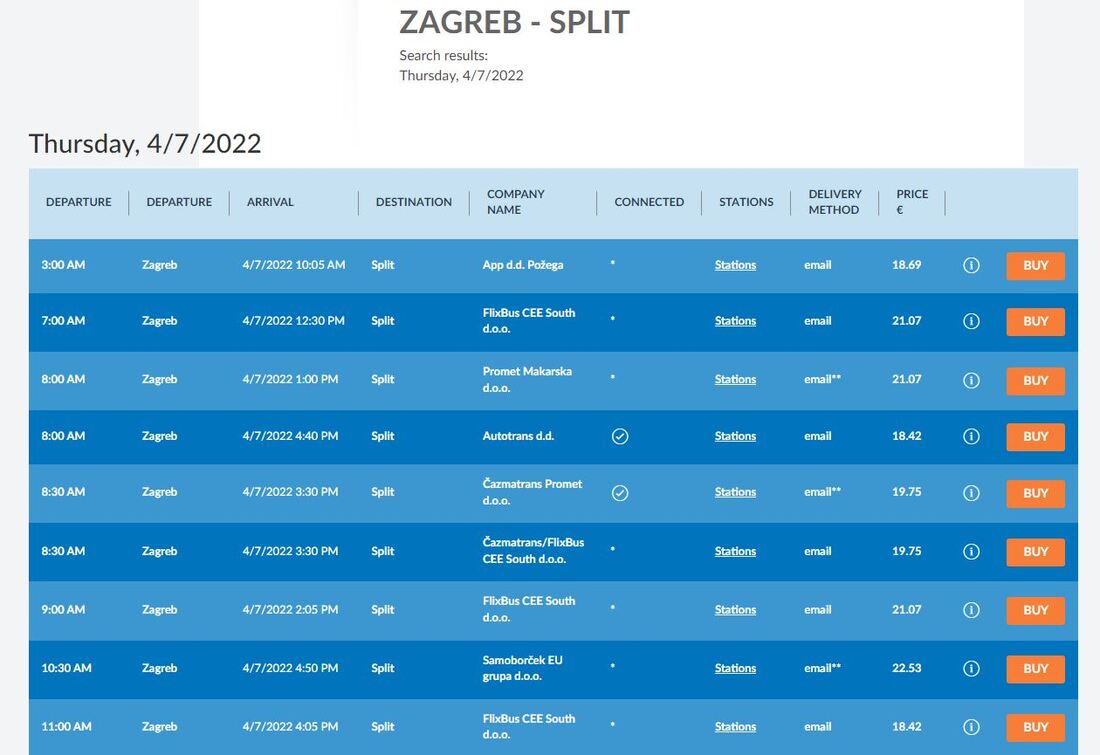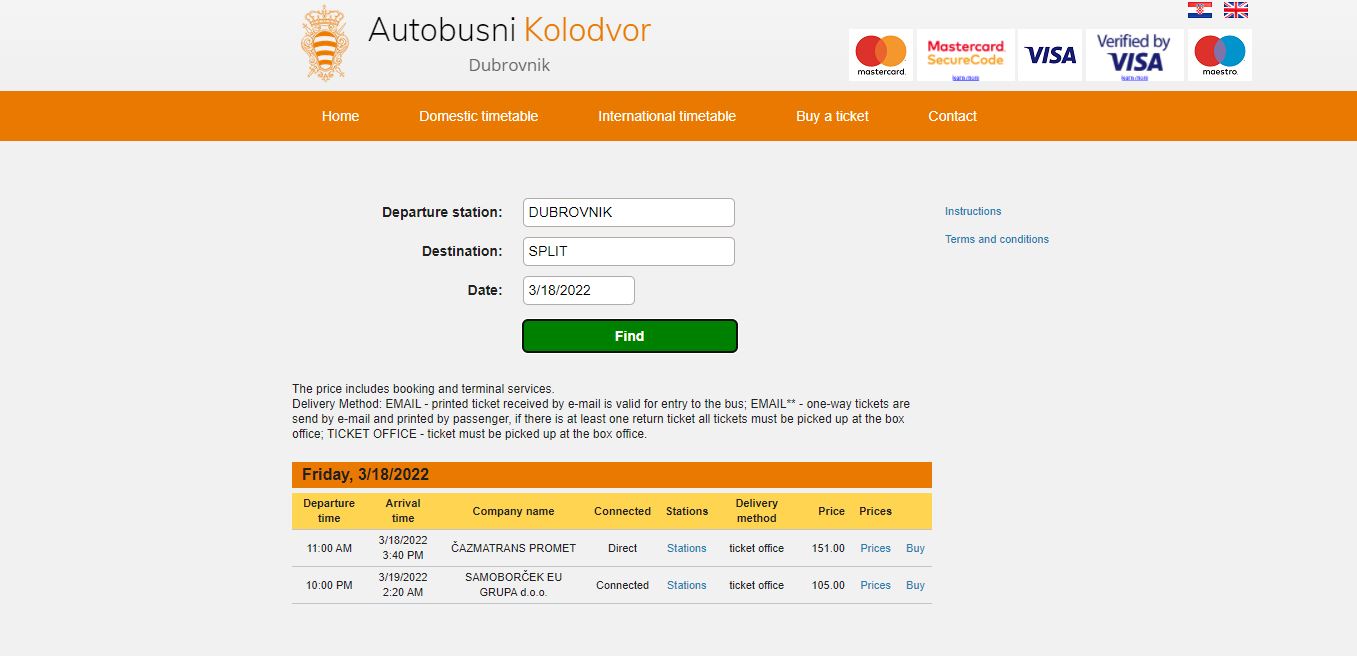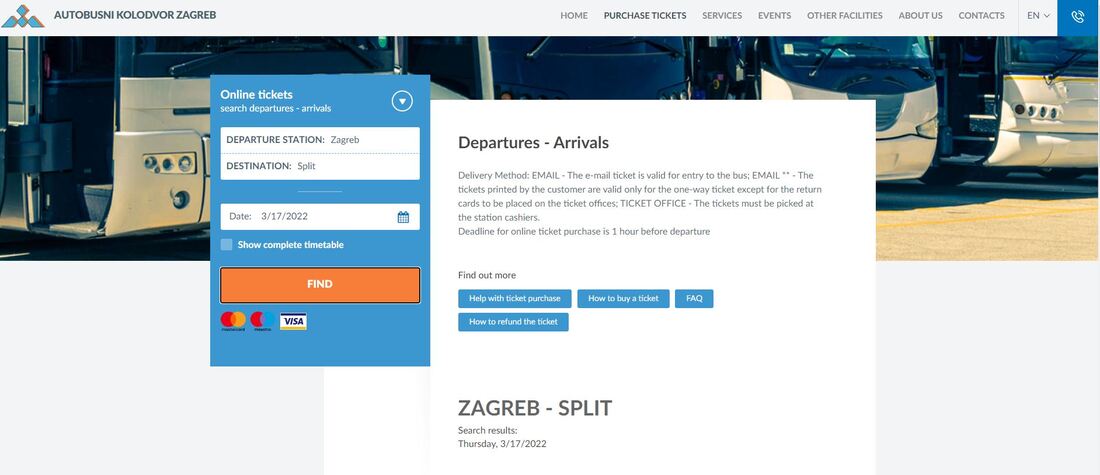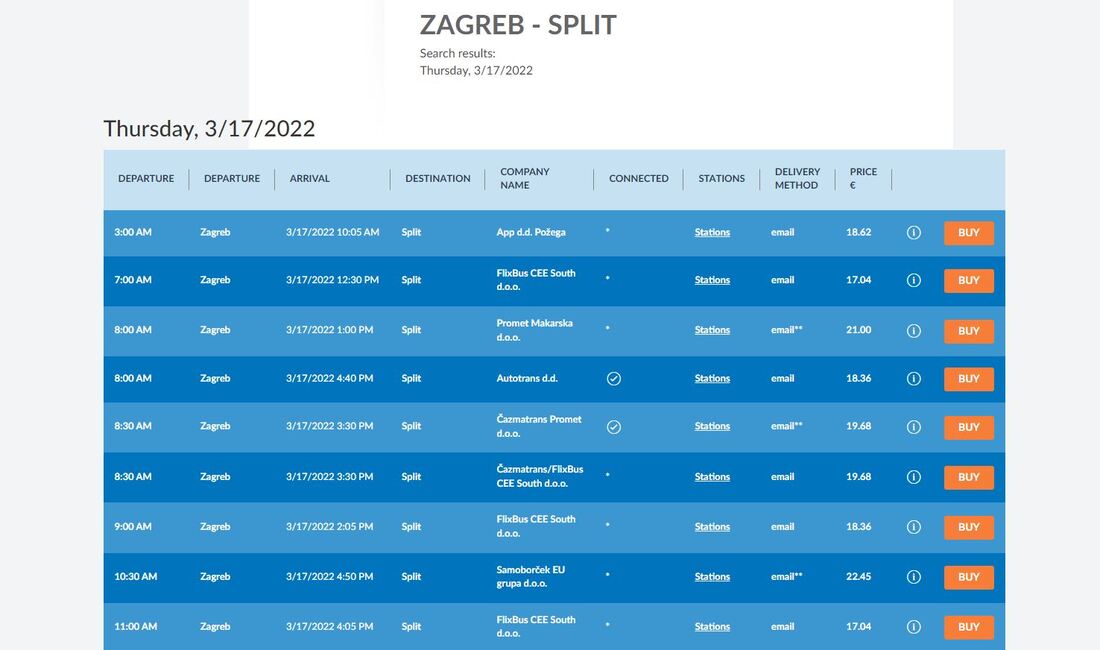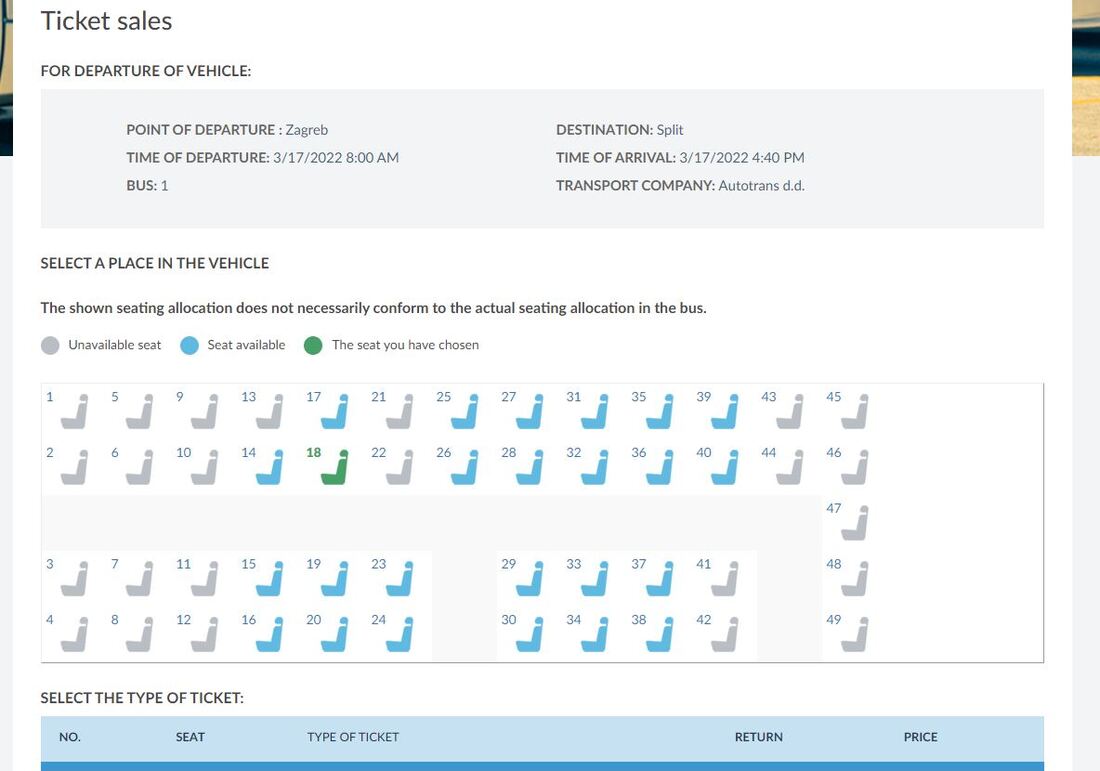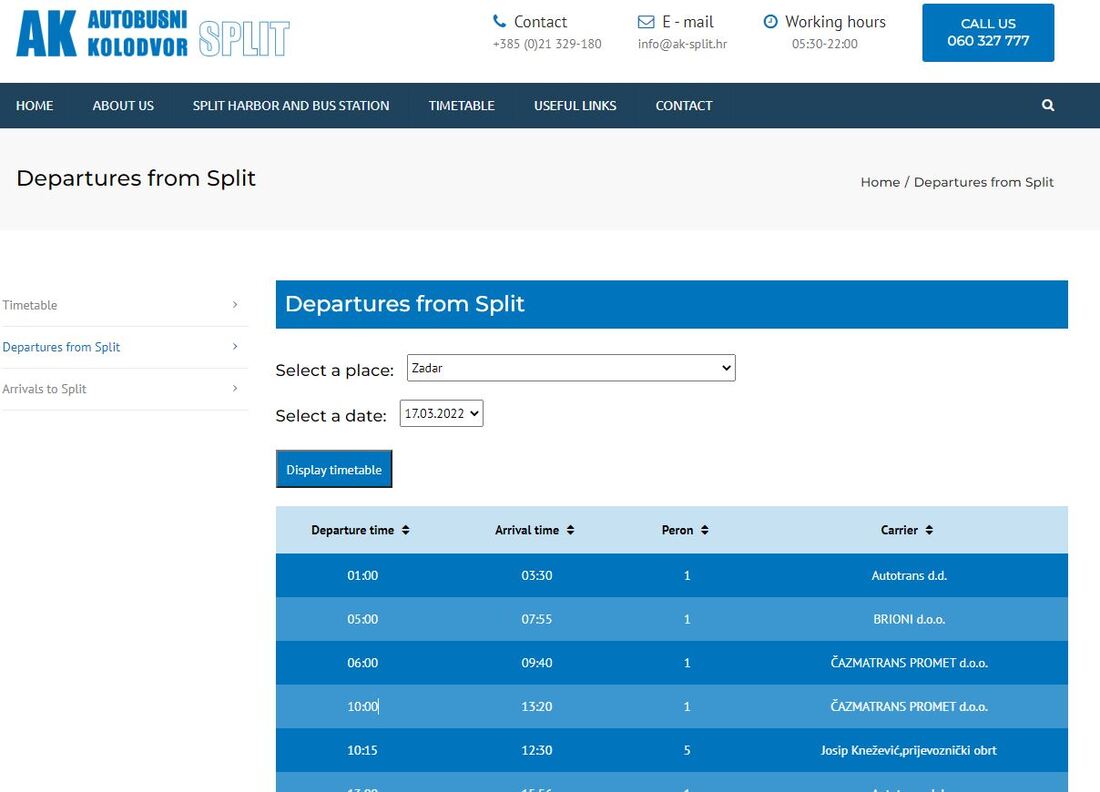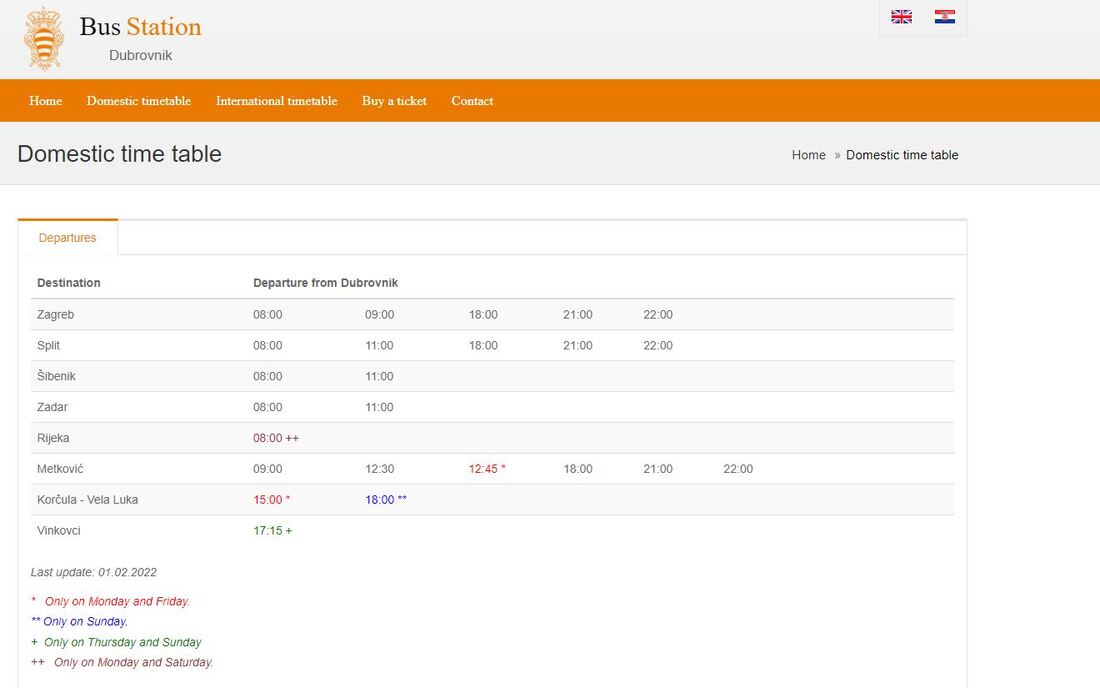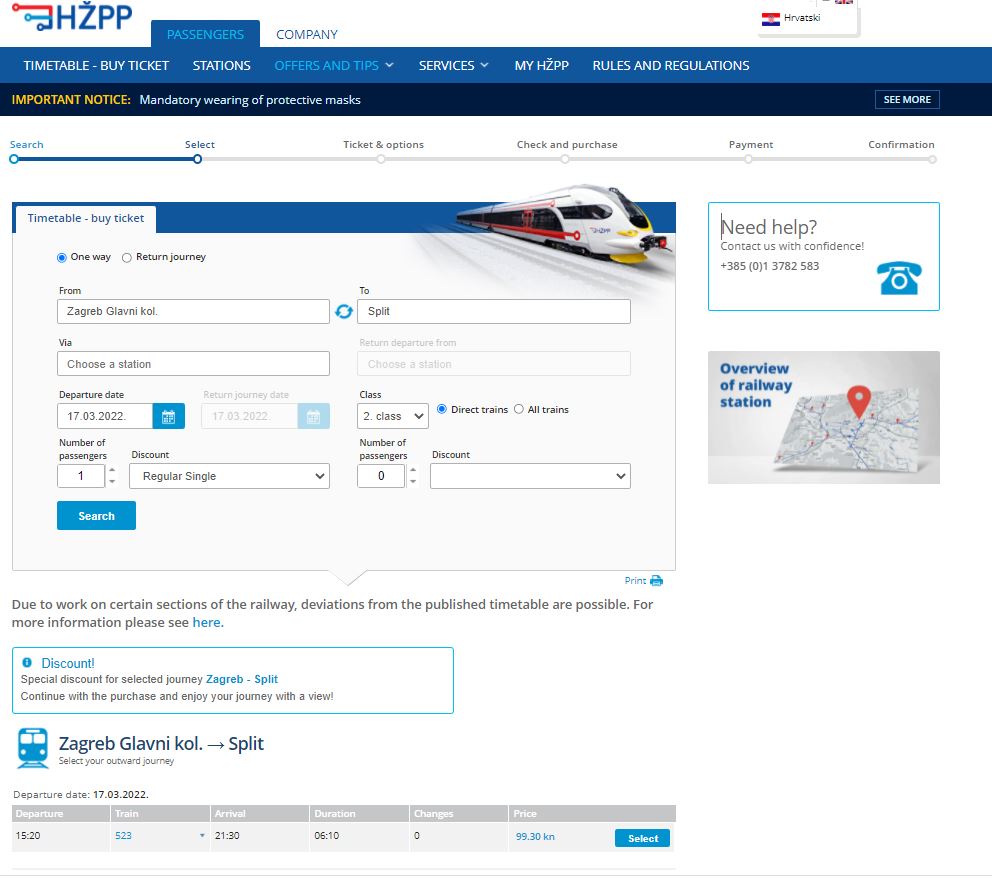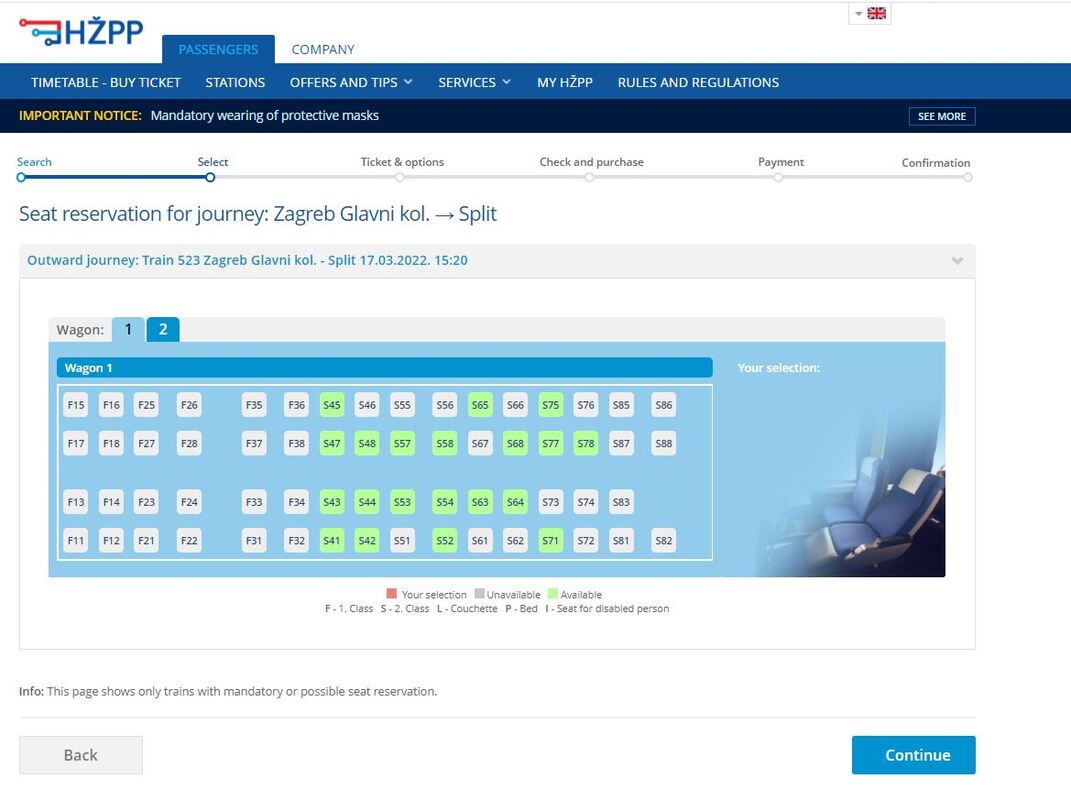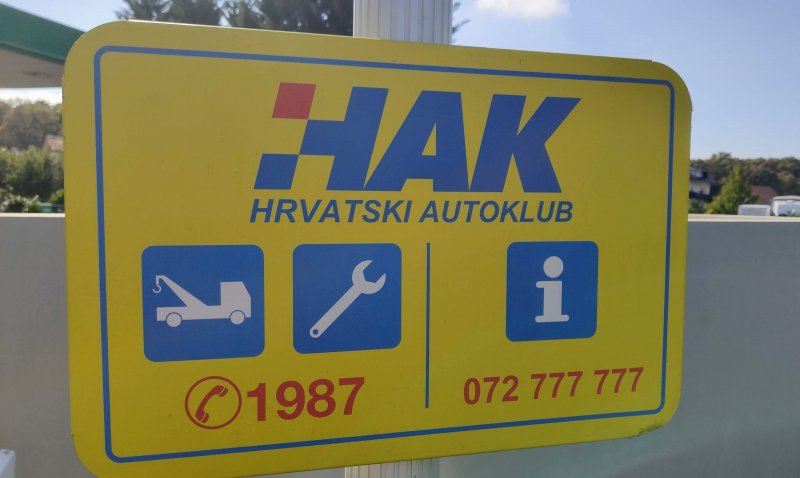Generally speaking, Croatia is not a big country, so it’s pretty easy to get from place to place. The means of transport are relatively modern by today's world standards, and during the tourist season, from around May to mid-October, the frequency in bus/train/ferry lines definitely increases.
The cost of transportation within Croatia can vary. Travelling by air is the most expensive but also the fastest, and the railway is the cheapest but also the longest way to travel in Croatia.
(and of course the price of transport in Croatia is very much related to the price of energy sources, like most places in the world)
By air
Croatia has 9 airports, and the largest and busiest airports are in Zagreb, Split, Dubrovnik and Zadar. Let's be clear, these are small airports when compared to other large world and European airports, but some have been completely renovated in recent years and are quite modern (like in Zagreb, for example).
Croatia Airlines is Croatia’s most popular airline, which operates most domestic flights (and connects Croatia with many other European countries).
If you want to fly within Croatia you can do it with Croatia Airlines with direct flights from Zagreb to Zadar, Split, Osijek, and Dubrovnik and all these flights last about half an hour to an hour. If you want to get between Zadar / Split / Osijek etc. there aren’t any direct flights, you’ll have to layover in Zagreb or another city (so in other words, Zagreb is the main hub).
Airline ticket prices for flights within Croatia depend on the time of year when tickets are purchased. They are most expensive during the summer and during the Christmas and New Year holidays, however they’re still pretty affordable even during peak season.
For example, the cost of the frequent line Zagreb-Dubrovnik during the summer can typically be purchased for less than 100 EUR (one-way).
Below, I will show ticket prices for several flights within Croatia and at different times of the year:
By bus
Buses which connect major Croatian cities and tourist destinations are in very good condition, meaning they’re air-conditioned, newer models, clean and quite comfortable.
As for the price, it is cheaper than air transport, and yet more expensive compared to rail (but faster and more convenient than rail in most cases).
Regarding the bus stations, they are generally more modest, but I’d say they’re pretty typical when compared to other bus stations in other European cities.
Below we will show the lines that run in the direction of Zagreb - Zadar, Zagreb - Split, Dubrovnik - Split.
We highly recommend buying online in advance in order to secure your seat and set-free any worries about space on the bus before even getting to the station.
Check out the layout of the websites of the bus stations in Zagreb, Split and Dubrovnik below
If I were to describe this company, perhaps it could be compared to Uber for buses. Flixbus connects partners who are bus companies that work through the Flixbus platform, and Flixbus makes money on them by getting a commission on bus ticket sales.
Flixbus also handles marketing, pricing, and customer service for a commission, on behalf of bus operators on the list of FlixBus bus partners.
What is good for passengers if they opt for Flixbus is certainly a better price in some cases. It should be said that it is not a fixed price, as in some permanent lines, but rather it varies depending on supply and demand and the time when you make your reservation.
Also, FlixBus usually provides free Wi-Fi, extra legroom, private outlets and lots of room for your luggage.
Regarding public transportation within Croatian cities, it definitely varies from city to city (including the ticket prices, as well as the condition of the buses). Usually larger cities have more modern and newer buses that connect city neighborhoods.
The price of the ticket fluctuates and is determined by the city authorities. Specifically, in Zagreb the price of a bus or tram ticket up to 30 minutes drive is 4 kuna or a little more than 50 euro cents while the price of a bus ticket in Dubrovnik is 12 kuna or 1.6 EUR if purchased in advance or 15 kuna or 2 EUR if you buy on the bus.
As for trams, the only two cities in Croatia that have trams are Zagreb and Osijek! Currently there are no subway systems in Croatia.
By train
Although it’s the cheapest, it’s typically the slowest, and the railways are the most neglected means of transport in Croatia. The Croatian government simply has not invested in this type of transport for many years, so we can’t say many of the trains here are very modern.
Croatia does not have high-speed trains or the appropriate infrastructure for them, so do not expect a fast ride as in some Western developed countries.
If you decide you’d like to go by train, it may be best to start with the Croatian Railways website: http://www.hzpp.hr/ to find out the routes they offer.
On the website you can find all information about timetables and prices between cities and places in Croatia and all existing lines. The website is clear, bilingual (Croatian and English) and it’s great that there is only one central website (unlike the bus stations, where each station has its own site and nothing is centralized).
Furthermore, one more convenient thing is that on the website you can buy a ticket with a credit card.
The ticket price is definitely the most affordable, for example, Zagreb - Split you will pay only 99KN or about 13EUR, but on that route you will ride over 6 hours, sometimes even longer.
For comparison, on the same route with the bus you will drive (with a couple stops for restroom/refreshment breaks) about 5 hours, but the price will vary between 130 and 180kn or 17 and 24EUR per person.
See the website and booking process below:
Also, some people ask about a train line connecting Zagreb and Dubrovnik - unfortunately, that doesn’t exist (a bus line does, though!)
Connecting Croatia to other European destinations by rail?
During the summer months, Croatian Railways opened a few new tourist lines connecting Croatia with other Central European countries.
Today, the popular routes are: Prague - Rijeka, Split - Prague and the night train on the route Split - Maribor - Graz - Vienna - Bratislava, which runs twice a week in both directions, and goes from June 2022.
By car
Local roads are also pretty well maintained and you will rarely come across potholes in Croatia.
The one downside of driving would be the cost. Gas is more expensive in Croatia when compared to North America, for example. In addition to that, highway tolls definitely bring up the price of driving if you’re doing any kind of distance.
Here is a link to the toll price list for highway routes => https://www.hac.hr/hr/cestarina/cjenik/a1
Just to have a rough picture, the price of the toll for the route Zagreb - Split is about 200kn or about 27 EUR, the price of the toll for the highway for the route Zagreb - Rijeka is 70kn or a little less than 10 Eur.
The year 2022 is very important in the history of Croatian roads because for the first time, Dubrovnik will be connected to the rest of Croatia by the Peljesac Bridge!
Up until now, you had to cross the Bosnian border and drive a few km through Bosnia before re-crossing the border back into Croatia to get down to Dubrovnik. This bridge opens in June 2022!
If you’re interested in renting a car in Croatia, there are several rental companies to choose from, such as Hertz, Sixt, Enterprise, etc.and also smaller local ones such as Fleet expert, Oryx, HAK rentacar etc.
Keep in mind, most cars are manual-shift, not automatic, and you’ll typically pay a premium for renting an automatic car.
My advice is, always before renting, firmly to check the conditions of your agreement with rental companies, especially regarding the full coverage. Some companies, even though you have paid full coverage, will not accept it if you did not follow the procedure in case the damage occurred.
That is why it is very important to be further informed about it. Also, don't be surprised if you have an additional fee in case of crossing the border (if you plan to visit neighboring countries with a rented car).
If you don’t feel like driving, but don’t want to take public transport either, a private transfer / taxi / Uber / Bolt are some other options!
A large number of companies provide private transportation, but my advice is that when you decide to use these companies to check their ratings on Tripadvisor, Trust Pilot or Google.
This will make you somewhat confident in the quality and safety of these companies.
When choosing a taxi, the most important thing is to agree in advance on the price of the ride, especially if you take a taxi at one of the airports. Uber and Bolt are obviously a little more transparent, so they might be the easier option.
By sea
Croatia is also connected by ferry lines with Italy, which might be convenient if you plan on seeing Italy before or after exploring Croatia. Popular lines are Zadar - Ancona, Dubrovnik - Bari, Split - Ancona, Rovinj - Venice.
The largest company with ferry lines is the state-owned company from Rijeka called “Jadrolinija.”
It is important to say that when planning your trip, pay attention to car-ferries (where you can take your car) vs. catamarans that are for foot passengers only. Catamarans are a much faster option and often go much more frequently.
The price of tickets vary depending on whether it’s a passenger-only ferry, or a car-ferry. The price of a passenger ticket, for example, from Split to the island of Hvar is a little more than 100kn or about 15 euros, which is pretty affordable.
However, if you want to go to the island of Vis by car, the cost of a one way ticket is around 340kn for one car and 54 kuna for one passenger. A round trip, with a larger family and car can then be a bit pricey.
Kapetan Luka, better known as "Katamaran Krilo" also provides good connections to the islands with its fast catamarans that run mainly in southern Dalmatia.
In the end, I would like to say that if you decide on any of these types of transportation in Croatia, I hope you will not be disappointed and that you will arrive at your destination on time. Carry a bit of patience in your pocket if you’re traveling within peak tourist season (July-August), as roads, buses, ferries can be crowded.
Also one more honest piece of advice, if you are not an experienced driver, try to avoid driving in Croatia. I say this from experience because it is difficult for any new driver to drive in new circumstances and on roads that you don’t know.
If you come from outside of Europe, some driving rules are a little different than for example in the US. Here there are many narrow, one-way roads, plenty of round-a-bouts, higher highway speeds, and maybe a slightly different style of driving.
I hope that I have given you at least a basic idea of what transportation is like in Croatia and we really hope you’ll enjoy visiting this beautiful country!

